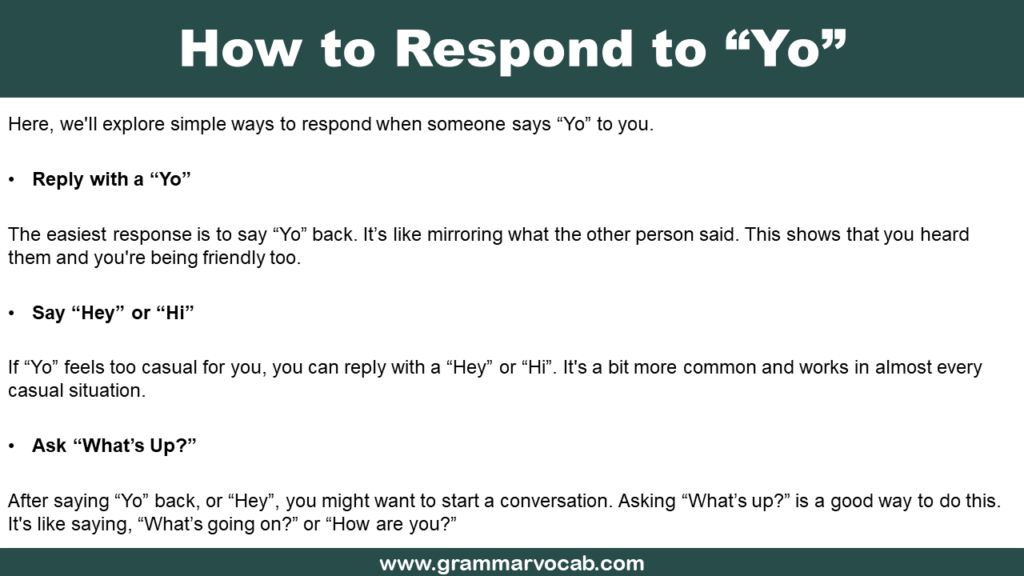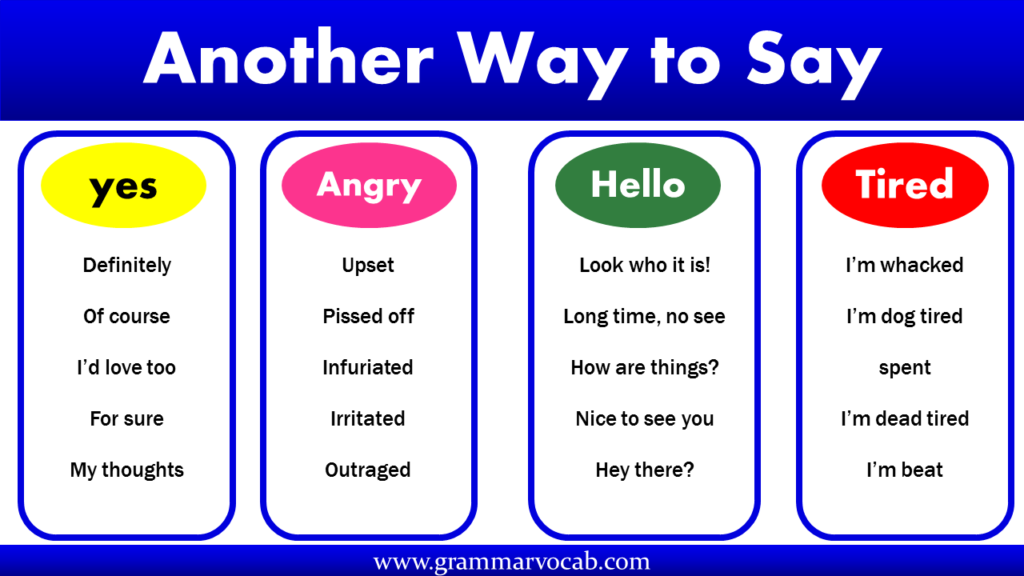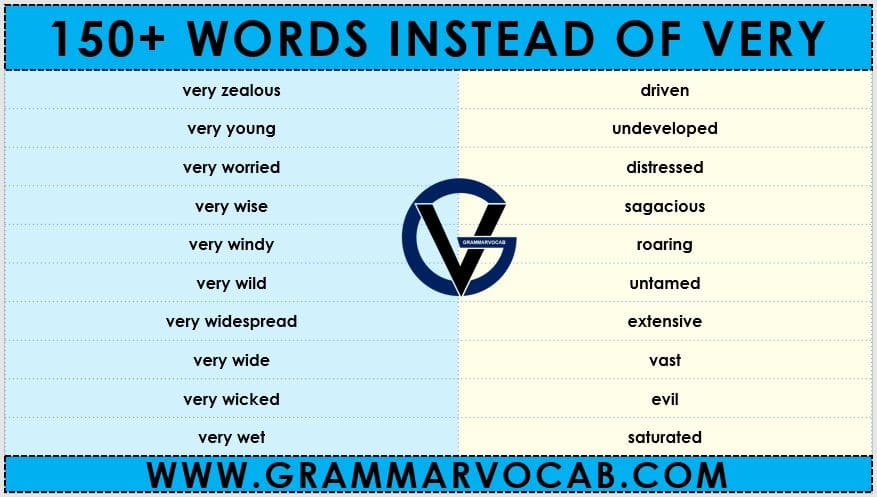When someone says “Yo” in English, how should you reply? This guide is all about that. “Yo” is a casual greeting, like saying “Hi” or “Hello.” It’s used a lot among friends or in relaxed situations. This guide explains the best ways to answer when someone says “Yo” to you. It’s written in simple English and is perfect for those learning the language. You’ll learn different friendly ways to respond, which is helpful in making conversations easy and fun. Whether you’re chatting with friends or meeting new people, this guide helps you feel confident in your response.
Better Response To ” Yo”
Have you ever heard someone say “Yo” to you and wondered how to reply? “Yo” is a casual greeting in English, just like saying “Hi” or “Hello”. People often use it to catch someone’s attention or just to say hi in a friendly way. Here, we’ll explore simple ways to respond when someone says “Yo” to you.
- Reply with a “Yo”
The easiest response is to say “Yo” back. It’s like mirroring what the other person said. This shows that you heard them and you’re being friendly too.
- Say “Hey” or “Hi”
If “Yo” feels too casual for you, you can reply with a “Hey” or “Hi”. It’s a bit more common and works in almost every casual situation.
- Ask “What’s Up?”
After saying “Yo” back, or “Hey”, you might want to start a conversation. Asking “What’s up?” is a good way to do this. It’s like saying, “What’s going on?” or “How are you?”
- Give a Nod or Smile
Sometimes, you don’t need to say anything. Just nodding your head or smiling is enough. This is a non-verbal way to acknowledge the person.
- Say “How’s it going?”
This is another friendly way to start a conversation. By asking “How’s it going?”, you show that you’re interested in hearing about the other person’s day or their feelings.
- Use a Friendly Gesture
A thumbs-up, wave, or high-five can also be a response to “Yo”. These are fun, friendly gestures that can replace words.
- Just Start Talking
If you know the person well, you can skip the formalities and start talking about whatever you need to discuss. This works best with friends.
Responding to “Yo” is all about being friendly and casual. Whether you reply with the same word, a different greeting, or a gesture, the key is to keep it simple and relaxed. Next time someone says “Yo” to you, try one of these responses and see how it goes.
Formal Response to “Yo”
To respond formally to a casual greeting like “Yo,” you might say:
“Good day to you,”
or
“Hello, I hope you’re doing well today.”
Informal Response to “Yo”
To respond informally to “Yo,” you might say:
“Hey, what’s up?”
or
“Yo! How’s it going?”
Guidelines for Adapting Your Response to ‘Yo’
When responding to someone who says “Yo,” the way you reply can depend greatly on your relationship with the person and the context. Here are some practical tips:
Do’s:
- Be Concise in Professional Settings: If it’s a colleague known for being casual, a simple acknowledgment like “Yes?” or “What’s up?” can be appropriate.
- Be Observant of Non-Verbal Cues: If in person, body language can provide clues on how to respond.
- Consider the Tone: If the “Yo” sounds serious, respond accordingly. Sometimes “Yo” is used to grab attention urgently.
- Use Humor if Appropriate: If it’s a friend, humor is often welcomed. Respond with something light-hearted or playful.
- Be Informal with Friends: With close friends, it’s usually okay to respond informally. A simple “Hey” or “Yo” back can suffice.
Don’ts:
- Avoid Overly Casual Responses in Formal Settings: If it’s a professional environment and the person isn’t a close colleague, avoid mirroring the casualness. Opt for a polite and neutral response.
- Don’t Ignore: Even if you find it unprofessional or too casual, it’s better to respond than to ignore.
- Don’t Use Slang if Unsure: If you’re not comfortable with slang or informal language, it’s okay to respond in your usual manner.
- Avoid Misinterpreting the Intent: Sometimes “Yo” is just a greeting, not an invitation for a long conversation.
- Don’t Assume Familiarity: If you don’t know the person well, keep your response more on the neutral side.
Adapting Your Response:
- Online or Text Conversations: Emojis or GIFs can be a fun and easy way to respond, provided the context is right.
- With Acquaintances: Keep it neutral. A simple acknowledgment can suffice until you better understand their communication style.
- In the Workplace: Gauge the company culture and the nature of your relationship with the person. If in doubt, lean towards a more formal response.
- With Friends: Feel free to mirror their language. A casual, friendly response maintains the tone of the relationship.
Remember, the key is to maintain the balance between being respectful and matching the level of familiarity in your relationship.




